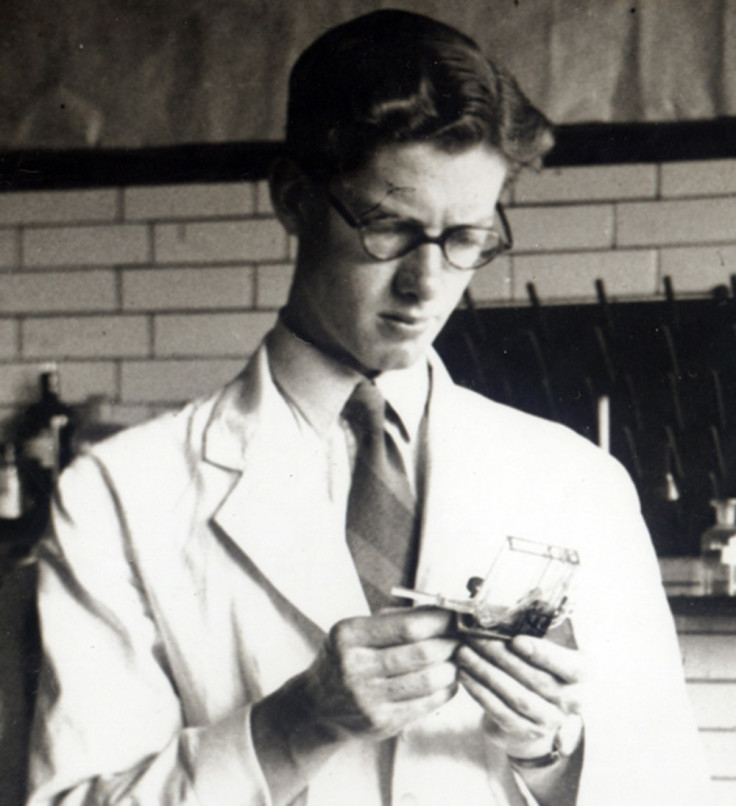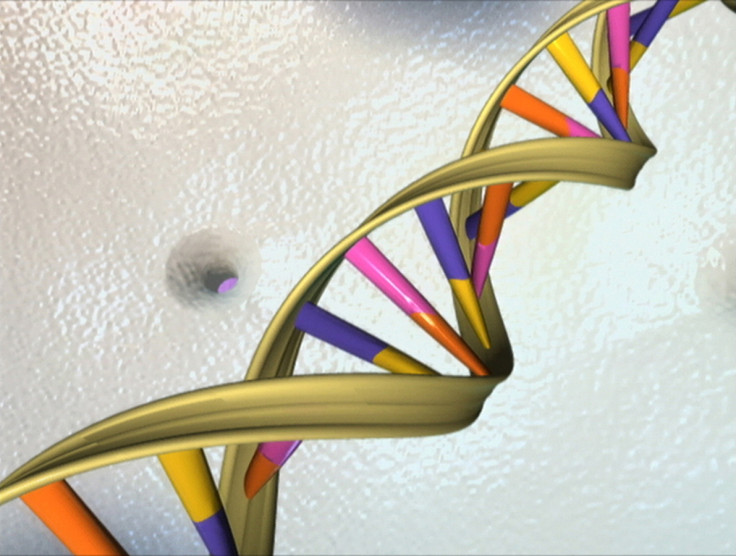This is the story of the forgotten scientist who paved the way for the discovery of DNA's structure
Michael Creeth played a pivotal role in one of the most important scientific discoveries of the 20th century.

When James Michael Creeth finished adding acid to the sample of DNA taken from a calf's thymus gland, he wasn't just completing the experiments that would earn him his PhD. He was paving the way for a discovery that would change the world.
Scientists James Watson and Francis Crick were famously the first to work out the structure of DNA, and Rosalind Franklin and Maurice Wilkins are often credited for capturing the images of the molecule that made this possible. But several other scientists who played a pivotal role in one of the most important scientific discoveries of the century are far less known – and deserve celebration.
In the autumn of 1947, Creeth and his PhD supervisors published the third of three papers from researchers at what became the University of Nottingham, which completed the evidence needed to show how the DNA molecule is held together. By proving that DNA contained the molecular glue known as hydrogen bonds, they made it possible for Watson and Crick to work out the molecule must take the shape of two strands held together in a double-helix structure. This discovery, six years after Creeth's work, enabled the creation of genetic science as we know it today.
Creeth even produced his rough own model for DNA, formed of two chains held together by the bonds between its building blocks – not too dissimilar from the actual structure. Unfortunately, his discoveries seem to have missed almost everybody's radar. So 70 years on, Nottingham has celebrated the discovery of hydrogen bonds in DNA with a special conference held in the building where the discovery was made and a dedicated plaque at the entrance.
DNA mystery
Creeth was born in 1924 and educated at the local Northampton County Grammar school. He stayed in England's East Midlands to read chemistry at what was then University College Nottingham, and after graduation undertook his PhD under the chemists J. Masson Gulland and Denis O. "Doj" Jordan, who helped Creeth reach his groundbreaking conclusions.
At that time there was growing interest in DNA because scientists suspected it might be the substance associated with genes or inheritance. Research had shown it was made from sections known as nucleotides. Each contained a sugar residue known as deoxyribose, a phosphate-group molecule and one of four different types of nitrogen-group molecules or "bases": thymine (T), cytosine (C), adenine (A) and guanine (G).
But how the DNA molecule was constructed and held together, and how it recorded our genes remained a mystery. Some scientists even (incorrectly) thought it might take the shape of a ball. If they could work out its exact structure, they might be able to reveal the secrets of the genetic code.

Creeth's fellow students, CJ Threlfall and HFW Taylor had already made inroads. Threlfall had worked out how to purify a sample of DNA so it could be examined for clues about the structure. Gulland, Jordan and Taylor then studied the purified DNA using a process called electrometric titration to follow how its pH changed as they added acid or alkali.
When they didn't get the results they expected, they thought it might have been caused by the presence in the DNA structure of hydrogen bonds. These occur when hydrogen atoms share electrons with certain other atoms including oxygen and nitrogen, and can affect the overall shape of the molecule.
The final and definitive step was made in an experiment by Creeth using a technique know as viscometry. This provides a measure of the size of the DNA molecule in solution and how the size can change.
When a strong acid or alkali was added to the solution, its "viscosity" or thickness (resistance to flow) dramatically dropped, which indicated the presence of hydrogen bonds. Creeth, Gulland and Jordan concluded that the hydrogen bonds joined the bases of neighbouring nucleotides.
The acid or alkali irreversibly disrupted these bonds to break down the DNA molecule into smaller units and make the solution much runnier. Though Creeth and his supervisors never quite managed to make the final step of working out the exact structure of DNA, they did manage to show hydrogen bonds must be an important part of the molecule.
Perfect fit
In his PhD thesis of 1947, Creeth correctly predicted the DNA molecule comprised two chains, each with a phosphate-sugar backbone on the outside and hydrogen bonded bases on the inside. This two-chain structure was later shown to perfectly fit the biological function of DNA. The hydrogen bonds were strong enough to hold the complementary chains together but weak enough so they could be pulled apart and read or copied like genetic instructions, which is the basis of how cells divide and how genes are passed on.
Shortly after the discovery, however, the team dispersed. Gulland tragically died in a train crash soon afterwards, and Jordan moved to the University of Adelaide via Princeton. It took Crick and Watson to determine the precise structure, in which the hydrogen bonds force the chains into a twisted double-helix arrangement.
While the three Nottingham scientists never made the final connections, their work was vital in making possible one of the most influential discoveries of modern science. In Creeth's own words, looking back after his retirement: "In hindsight, we had been given not just a glimpse, but a good view of that particular bonding that is nothing less than the key to life on this planet."
Stephen Harding is a Professor of Applied Biochemistry at the University of Nottingham.
This article was originally published on The Conversation. Read the original article.






















